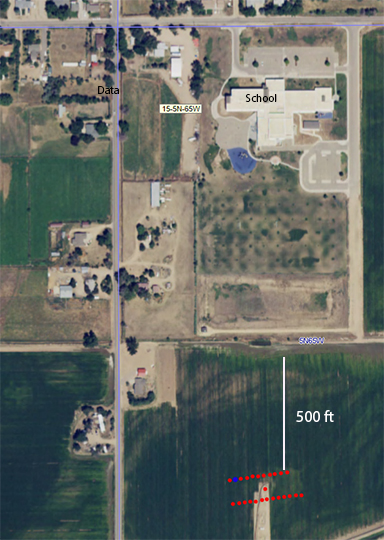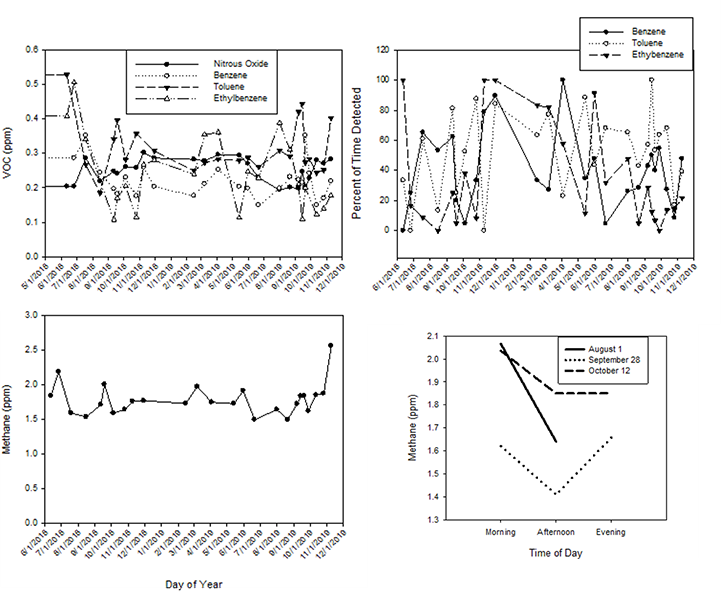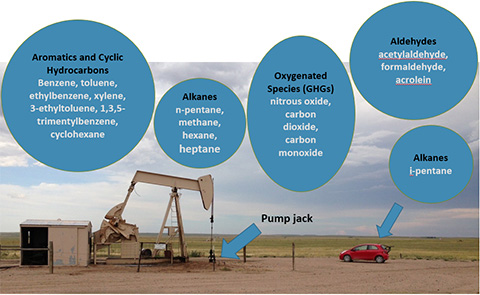Bella Romero Fracking VOC Data
This oil and natural gas (O&NG) fracking site in Greeley has received considerable attention (NY Times; FracTracker). We started collecting data in June 2018 prior to the completion of fracking. Eleven of the wells are DG (drilling started, has spud, but not completed) status and 13 are XX (permitted but not yet started drilling). The impetus on leakage of volatile organic compounds (VOCs) from O&NG activities is two-fold: 1) many VOCs pose known health risks, and 2) with sunlight, they form ozone, which poses many other problems.

THE SITE
Picture shows location of fracking wells (red dots) in relation to school and data collection location.
VOCs from Fracking
The image above gives some of the common VOCs that comes from specific fracking activities/equipment.
Check out this short video.
DATA Background
These data are taken with a DX4040 FTIR Gas Analyzer; each date represents 20-30 minutes of data collection. As with all such equipment, there are lower detection limits for each volatile organic compound, so values below these limits should be scrutinized. As well, a zero may simply mean the levels are below the detection limit and not actually zero. We provide the raw data and the means based only on values greater than the lower detection limits.
Because of the way we calculated the means, based only on values above the lower detection limit, we also provide the percentage of times during data collection that values were above the lower detection limit as another measure of the prominence of chemicals.
THE DATA 
Take-Home Messages
1. Because n-pentane is always greater than iso-pentane, these VOCs are generally from O&NG operations (Gilman).
2. We recorded several VOCs at the ppm levels, and although not above recommended exposure limits, they are potentially still a health risk (see McKenzie et al. 2018).
3. Levels were noticeably greater in the mid summer, perhaps due to the timing of drilling, when nitrous oxide was lowest? Benzene averaging above 0.1 ppm for all sampling periods (1 ppm over an 8-hour day is the maximum time-weighted exposure limit for benzene to be carcinogenic; sometimes we are registering 0.3 and this is likely 24-hr exposure. TWAs for Toluene = 200; Ethybenzene = 100; NO = 25.
ADDITIONAL VOC INFORMATION
Several western US studies show VOC concentrations in relation to oil & natural gas (O&NG) operations.
Petron 2014 - Denver-Julesberg Basin
Pfister & Flocke 2017 - Northern Colorado Front Range Met Area
ADDITIONAL INFORMATION
Below are additional studies of O&NG health and environmental impacts, and check out Colorado Rising's false claims.
McKenzie 2018 - see also her webinar


